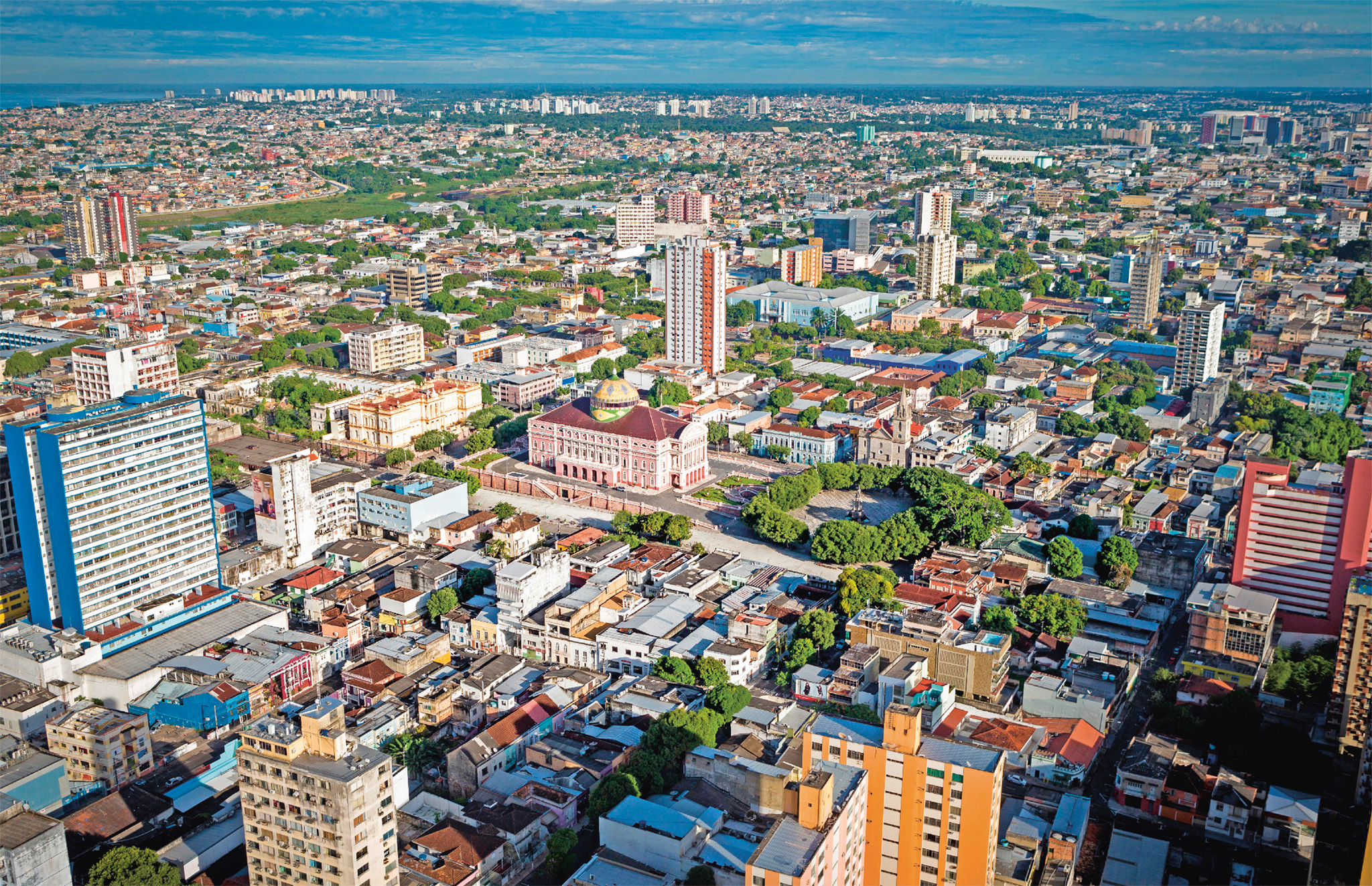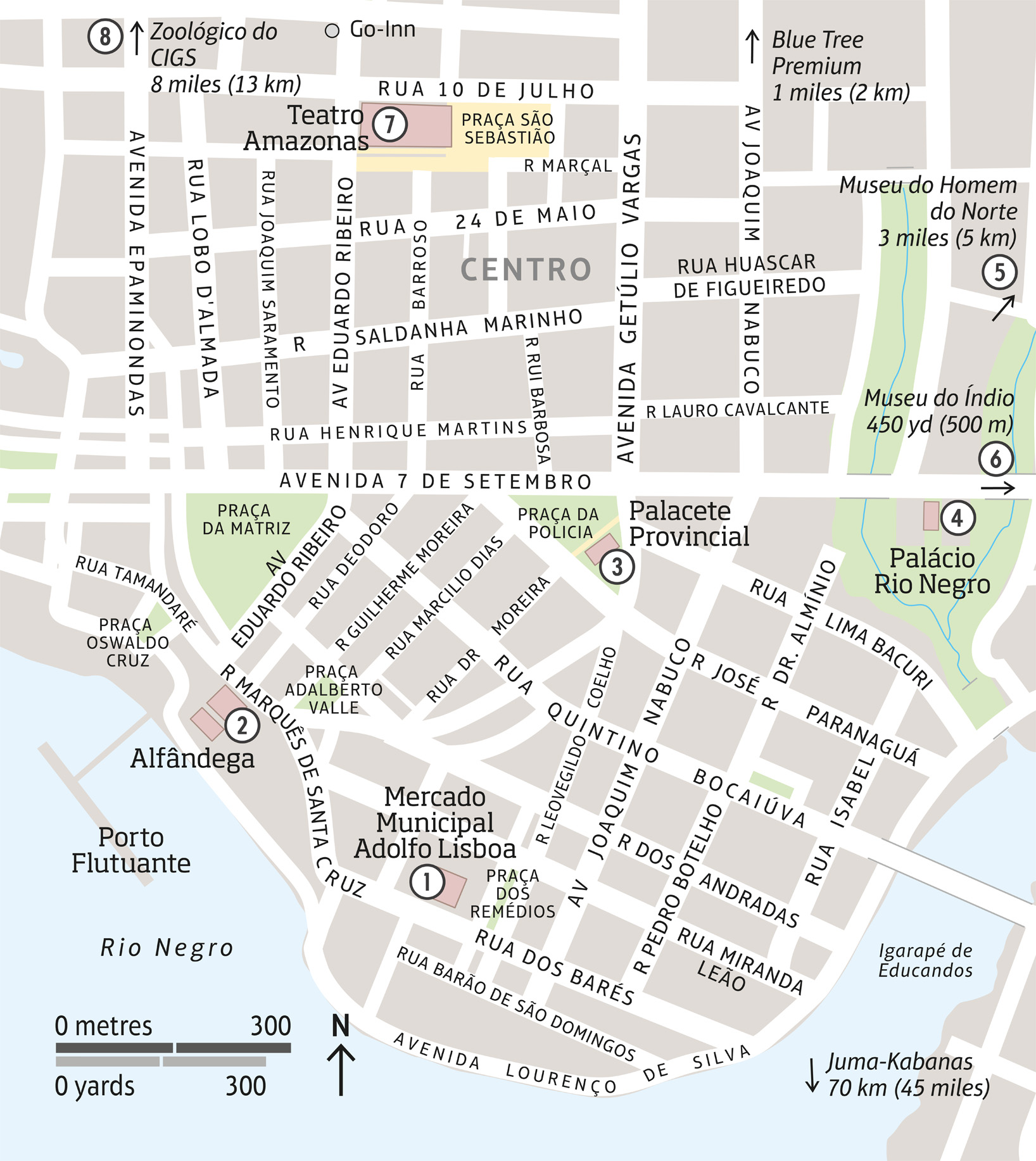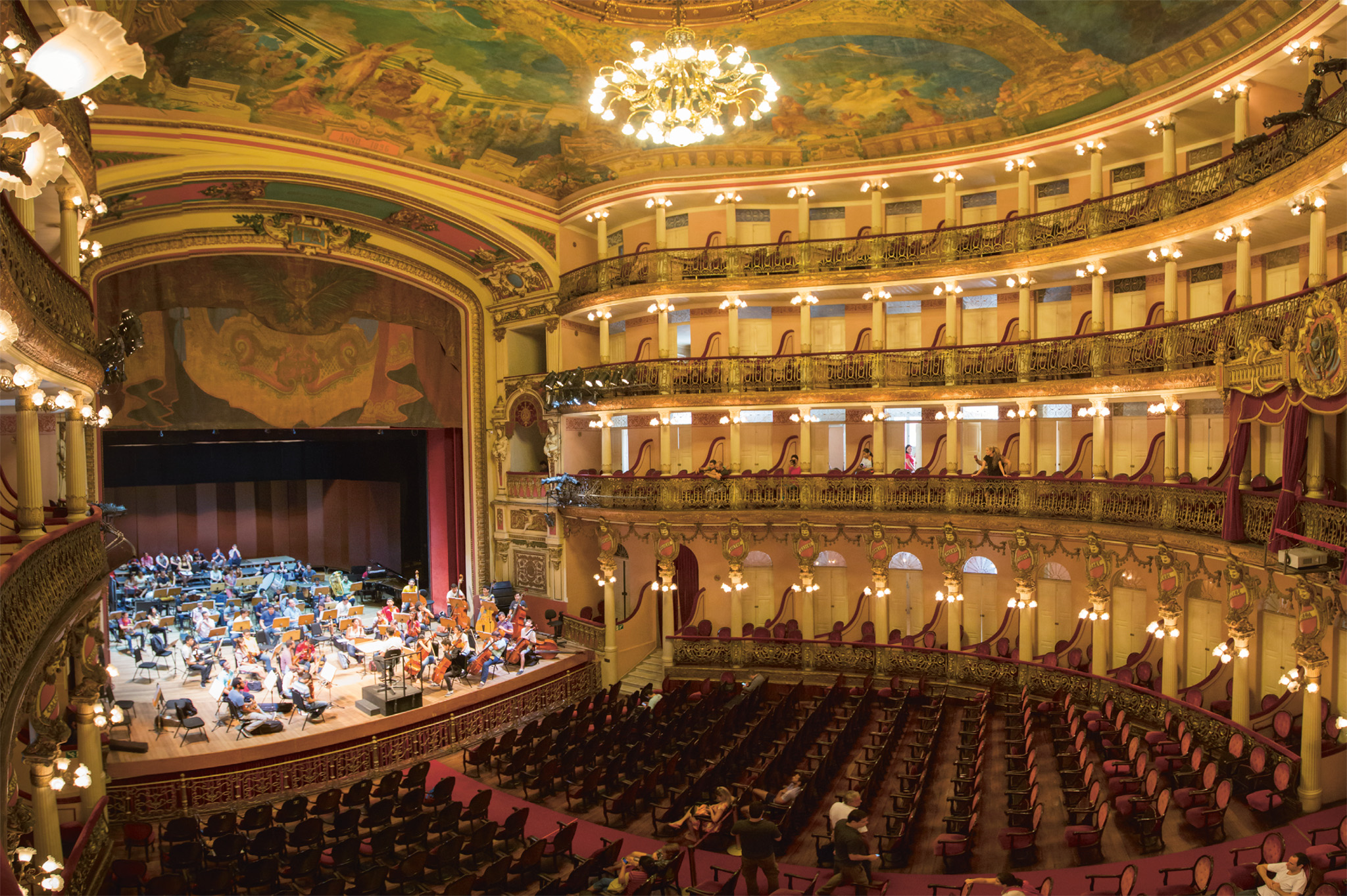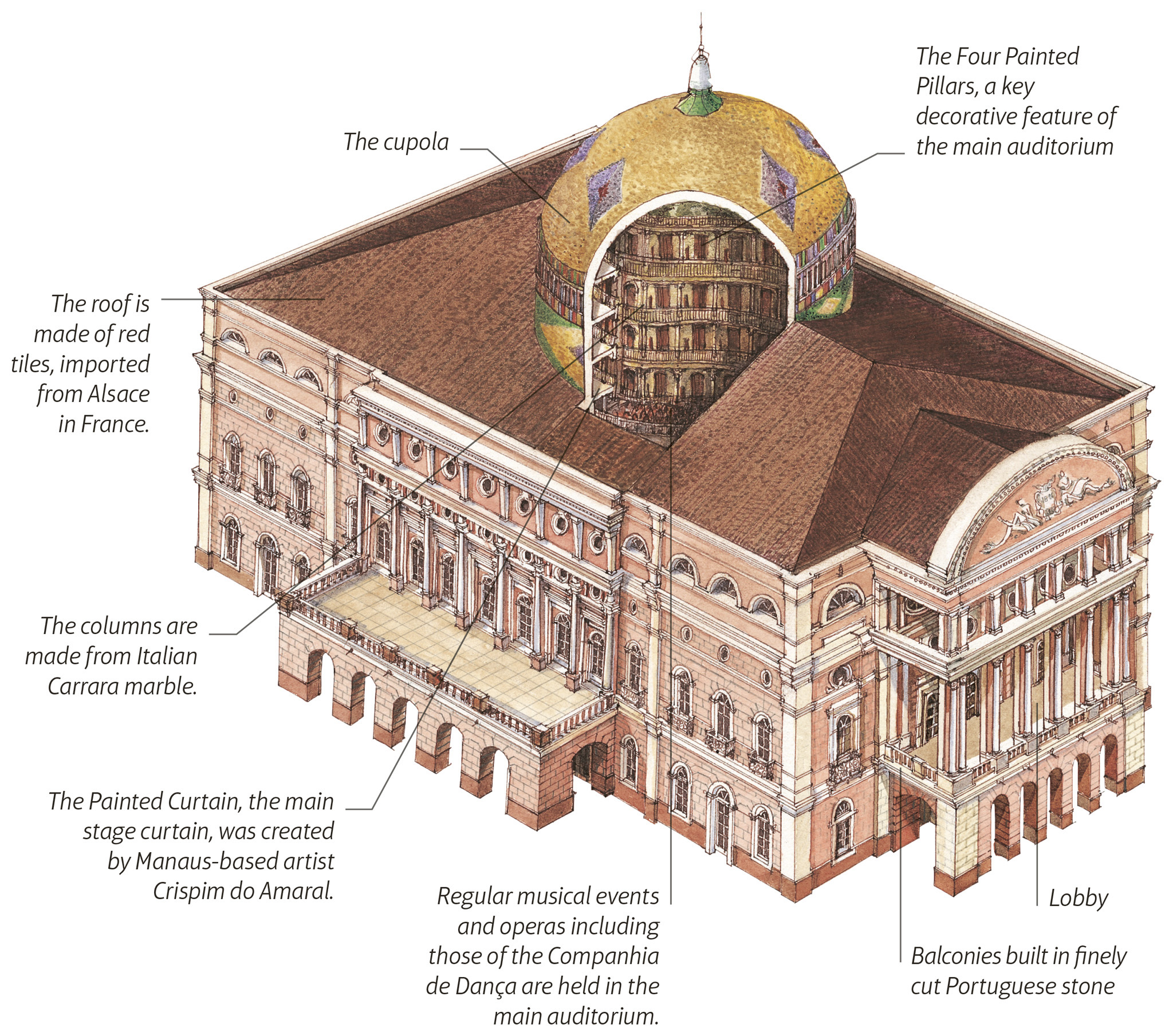
t A pleasant downtown square in the port city of Manaus
g The Amazon g Contents
Manaus is a legendary city, located at the heart of the Amazon forest on the banks of the Rio Negro, close to where this great river blends with the even larger Amazon river. Manaus is a busy city, combining the hectic pace of a modern port with the laid-back feel of a jungle town. Its brief economic boom between 1888 and 1912 – due to the export of rubber – catapulted Manaus into wealthy city status, but the only remaining signs of this are the port’s European buildings and the splendid Teatro Amazonas.

t A pleasant downtown square in the port city of Manaus
experience The Amazon

n Double-tap image to read the labels
This municipal market was built in 1883, very close to the port. Looking up to its elegant ceiling and stunning Art Nouveau ironwork structure, it is not difficult to see that the design was inspired by Gustave Eiffel’s work. The cultural evening held here on the last Friday of every month offers a chance to experience regional music, food, and entertainment.
Constructed in 1906 at the height of the rubber boom, the Alfândega (Customs House), like many of the well-engineered features of Manaus from this period, was entirely pre-fabricated in England, with the stone used brought from Scotland. Much of this refined building’s glory can be seen from the Praça Adalberto Valle opposite.
Built in 1874 originally to house the police headquarters, the Palacete Provincial is now a cultural center, which is home to several interesting museums and collections. These include the Museum of Image and Sound, the Military Police Museum, and the Numismatic Museum. The Palacete’s highlight is the art gallery, which features modern and contemporary art by regional painters, photographers, and installation artists. The exuberant paintings of local flora and fauna by Manaus local Rita Loureiro are especially noteworthy.

GREAT VIEW
From the floating docks (Porto Flutuante) to the Mercado Municipal, the Manaus waterfront offers great scenes of the city’s working life. There’s a steady bustle of boats, from traditional Amazonian ferries to fishing trawlers and great cruise ships.
A remarkably well-preserved colonial-period mansion, the almost garish Palácio Rio Negro was built in 1903 during the rubber boom. It was originally home to an eccentric German rubber baron, Waldermar Scholz, and in later years housed the local government. These days, much of it has been opened to the public as a cultural center. The palace hosts art exhibitions, events, and film screenings.
A fascinating anthropology and ethnology museum, the Museum of Northern Man has exhibits on the way of life of the people of northern Brazil. It mainly focuses on people of mixed indigenous Brazilian and European ancestry; this community, who live along the riverbanks, are known locally as the caboclos (copper-colored). Cultural, social, and economic aspects of life in northern Brazil are detailed with photographs, artifacts, and everyday objects, such as historic cooking utensils, costumes, and an interesting collection of indigenous weapons, including the infamous furador de olhos (eye piercer). There are also displays on guaraná (a native plant) and rubber production.
experience The Amazon
|
Stay Go-Inn Located right in the city center, close to the Opera House, this good-value hotel also offers a hearty breakfast. ⌂ Rua Monsenhor Coutinho 560 § (92) 3306 2600 \\\ Blue Tree Premium A luxury hotel with well-appointed rooms and gorgeous amenities, including an outdoor pool, sauna, and gym. ⌂ Avenida Umberto Calderaro Filho 817 ∑ bluetree.com.br \\\ Juma-Kabanas This simple, family-run lodge offers the ultimate rainforest experience. Three hours from Manaus by boat, there’s no internet or telephone, just jungle wilderness. ⌂ Careiro, Amazonas, 69250-000 ∑ juma-kabanas.com \\\ |

t The stage and curved balconies of the Teatro Amazonas’s auditorium
An excellent ethnographic museum, the Indian Museum was established by Salesian nuns and is based on their work as missionaries in the Rio Negro area. There are many feather-work exhibits and some weapons and tools, as well as artworks, household and sacred objects on display. Explanations of the displays are in Portuguese, English, and German.
Built at the end of the 19th century during the belle époque, when fortunes were made from the extraction of rubber in Manaus, the Teatro Amazonas remains one of the jewels of the Amazon region. This grand Renaissance-style opera house was designed by the Gabinete Português de Engenharia de Lisbon (Portuguese Engineering Academy of Lisbon). Inaugurated on December 31, 1896, it was two more years before construction was completed and the prominent landmark with its glistening dome appeared above the port. The impressive cupola was created using 36,000 colorful ceramic tiles, imported from Alsace on the Franco-German border. Major restoration was carried out in 2016, and today the main auditorium can seat almost 700 people.

t The Teatro Amazonas, topped by a splendid dome
One of the few places around Manaus where you might see a jaguar at close quarters is the fascinating Zoológico do CIGS. Located toward Ponta Negra in the army jungle training center, this small zoo is home to over 200 animals including many caimans, monkeys, exotic birds, and an unforgettable large pit full of anacondas.
The four pillars in Teatro Amazonas’s main auditorium were painted in Paris then built in Manaus.